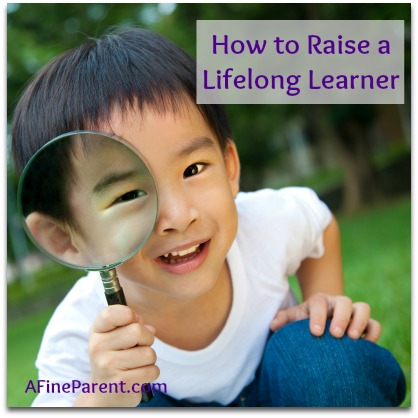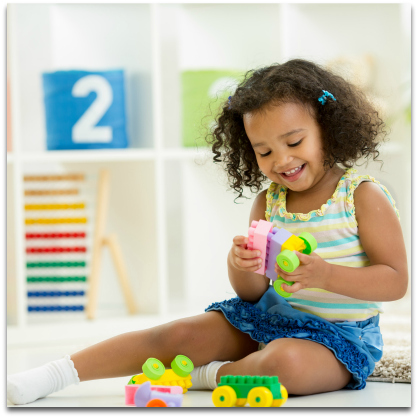 I love learning. I love knowing and discovering new things.
I love learning. I love knowing and discovering new things.
It’s one of the reasons I decided to homeschool my children. I wanted them to observe my excitement about discovering new things and develop their own love of learning.
In the third year of our homeschooling journey, I read a book that suggested I compose a mission statement for what I wished to accomplish during our homeschooling years.
Aside from teaching our children to be compassionate and caring individuals, the third value I wanted to instill in them was to be lifelong learners.
That was two years ago, and since then I’ve learned a few things about raising lifelong learners.
Lifelong learners is a term to describe someone who desires to be a forever student. They’re always exploring, thinking, creating, wondering, discovering, questioning – maybe about a particular subject or generally.
Any parent wants their child to learn, but I wondered: what’s the value of being a lifelong learner?
Research has shown that lifelong learning has a vast impact on brain health, building confidence, and furthers children’s socialization skills. It also provides greater career opportunities and sharpens the ability to communicate.
Raising a child who is a lifelong learner is not hard. But it takes time and patience, just like any other aspect of parenthood!
When we give our children the gift of loving to learn we equip them in an insatiable desire to understand their evolving world and the relationships they have.
One of the most beneficial aspects I’ve experienced in my journey to creating lifelong learners is the relationship I’ve developed with my children. I’m able to watch their face light up when they understand a concept or witness them walking themselves through a process of steps to build a fort.
I’m reminded that they’re real people, with passions, desires, and creativity coursing through them like a river.
When we show them we’re on their side, that we want to help them, they learn the value of being a good parent.
And that’s the best thing they can learn.
Here are some ways to I’ve begun cultivating the lifelong learner in my children.
#1 Have Conversations
 Kids love talking, especially about things they’re interested in. And they love it when we, as adults, don’t talk down to them. Use the real words for things. If they don’t understand explain it to them, or help them track down the answer.
Kids love talking, especially about things they’re interested in. And they love it when we, as adults, don’t talk down to them. Use the real words for things. If they don’t understand explain it to them, or help them track down the answer.
I’ve found that igniting these conversations with them develops a robust vocabulary and teaches them how to converse with others. This is an essential skill in any industry or field, or just to grow deeper relationships with others.
Another thing kids love talking about is themselves. Though it’s great to be able to articulate your thoughts, this leaves the conversation one-sided. I want to teach my kids how to be interested in others.
I try an implement this when my kids are upset. I’ve reminded them that I’ve felt sad, lonely, upset, frustrated, or however they’re feeling, at some point in my life and I share that experience with them.
Not only does it create a deeper connection with them, their interest is sparked and they begin to ask me questions about my experiences, and are often surprised to discover I’m human!
When my kids want to talk to me, I do my best to listen up and talk back!
#2 Ask Questions
Nothing gets us thinking more like asking open-ended questions. Open-ended questions have no definitive answer so kids are free to explore strains of thought without worrying about getting the answer wrong.
When my kids express their love for something, I ask them why they love it, what they think about it, what if it were different – those types of questions to get their brains churning.
When we read a book, watch a video, or attend an event, I ask them their opinion and keep the conversation going as much as I can.
#3 Promote And Preserve Their Curiosity
 Children are naturally born curious. They learn by touch, smell, sight, taste, hearing, and movement.
Children are naturally born curious. They learn by touch, smell, sight, taste, hearing, and movement.
And they want to know all about it. Why? How? What? Where? Who?
However, adults often have their own agenda to follow and don’t have time for children to stop and ask questions or examine the bark of the tree.
I’m often this way – I’m a hustler parent. I have places to go and things to do!
Ironically, most of what I’m hustling for is on their behalf. But I am also a curious person at heart. And being the curious person I am, I wanted to find out just how long it would take to allow room for a little curiosity in our schedule.
So, one time at the park, I did my own experiment. My children asked a question. They had found a leaf and wanted to stop and look at it. I timed how long we sat there and chatted about the leaf.
The initial examination and explanation took nearly a minute. 60 seconds. Surely we can spare a minute, or maybe even two minutes, to boost our children’s curiosity and inquires about the world.
If I’m absolutely in a hurry, I say, “That’s a great question and we will try to find the answer, but right now we need to leave for Grandma’s house. Can you try to remind me later and we will spend some time figuring it out.”
#4 Read, Read, Read
It’s no secret that early literacy sets children up for reading success. But aside from that, exposing our children to books about cultures and people that are different, while helping them see beyond themselves and their situation, can further grow a lifelong learner and grow empathetic children.
Not only does reading early engage children with language, research shows it also develops social-emotional skills, such as taking turns and being patient.
When we visit the library, I check out books on different cultures, races, and places so my children have a broad view that expands past our driveway.
My son loves non-fiction books, and has mountains of books with various titles that revolve around animals, dinosaurs, bugs, nature, and history. He will read these well past his bedtime and is a modern-day Encyclopedia Brown, eager to share his knowledge of stink bugs with anyone.
On a trip to the zoo, I was pointing out different types of monkeys and became stumped at a photo of a monkey I didn’t recognize. I asked my son what he thought, and without missing a beat, he replied, “That’s a Golden Lion Tamarin Monkey, Mom.”
Silly me!
#5 Cut Down The Screen Time
 We know, right?
We know, right?
Numerous studies have shown that excessive screen time stifles creativity in children and stunts their growth. From birth to age three is what doctors call a “critical period” in which the brain is building its permanent foundation. Stimulation should not be achieved by screens, but outside, hands-on activities, especially for children under 18-24 months of age.
Creativity is what children are known for! Children use creative play to learn proper social behaviors and build intelligence. Engagement in too much TV or other screen time, may spur children to believe that creative, imaginative play is boring, and rely on the ideas or stories of others instead of forming their own.
Screen addition can negatively impact their cognitive thought and language development as well, two key components to shaping a lifelong learner.
There’s an appropriate use of screen time. Our family is very pro-technology, and Google is my assistant teacher. But we do stress limits and have rules and expectations before we power on a screen. Each family is encouraged by the American Academy of Pediatrics to develop their own rules for media.
For example, if my son is engaged in a science lesson and wishes to watch a video on penguins, I’ll search for a video or documentary on the Arctic. But the recreational screen time is extremely limited, especially since we’re a homeschooling family and the TV and iPad whisper to us daily.
To hone their desire to keep learning, we put energy into being in the outdoors, inspiring conversations, reading together as a family, and keeping screen time to a minimum.
#6 Let Your Children See You Fail
A huge part of being a lifelong learner is learning to fail well because it will happen. We are their front line for giving them a healthy attitude towards failure.
Failure is often our greatest teacher.
When I burn our dinner (which I do often) I try not become frustrated, but I let my children see me learn from my failures. I talk through what happened out loud and in front of them. Where did I go wrong? Did I miss a step? Was the oven too hot? Did I use the correct ingredients? (It turns out cinnamon looks a lot like cumin.)
Our response to our own failures is paramount to our children. When they see us portray an attitude of frustration and become stuck, they’ll think that failure is the end and will resist trying again.
#7 Show Excitement About Their Interests
 When my daughter took a liking to soccer, my mind flooded with negative and anxious thoughts. She’s going to break a leg. What if she’s not good enough? What if she fails? She’s going to kick the ball through a car window.
When my daughter took a liking to soccer, my mind flooded with negative and anxious thoughts. She’s going to break a leg. What if she’s not good enough? What if she fails? She’s going to kick the ball through a car window.
These thoughts brought a toxicity into her sharing her desire to play soccer with me. I winced when I thought of her in the hot sun, or the cost of being on a team, or the practices she’d need to attend. My lackluster attitude brought her down instead of building her up.
If I would have been more encouraging and supportive at the start, we could have avoided some tears. Eventually I realized that I cannot protect her from failure or disappointment, but I can teach her how to manage her failures and disappointments.
That is 100 times more valuable to her than keeping her in a bubble.
#8 Invite Them Into Your World
Need to cook a meal? Run to the bank? Run an errand? Invite them along!
“Come do this with me,” I say. When I bring my kids along it creates an opportunity for them to understand how adults manage daily tasks.
I ask them questions about what they thought the bank would be like, or how they’d like to help with dinner preparations. Maybe I will use this time to teach them a new skill!
Two years ago, we tackled a huge home project – renovating our bathroom. My husband and I completely gutted it ourselves and we let the kids do child-appropriate work. We allowed them to paint and check for leaks. And they accompanied me to countless trips to the hardware store! It was a prime opportunity for them to see the detailed work that goes into home renovations and to be included in the project.
#9 Be A Lifelong Learner Yourself
 I love telling my kids fun things I learn about.
I love telling my kids fun things I learn about.
I’m a health enthusiast, so I love reading or attending lectures to learn more about healthy living. When I come home with new information, I share with them what I’ve learned and asked them how they think we can implement in our family.
They’ve interjected some great ideas. One was to have dance parties after I told them I learned that dancing has positive effects on the brain.
Sharing my knowledge with them has spurred their own adventures. When I learned that our taste buds change every 14 days, they became a bit more flexible to trying new foods. And in this house, trying new foods counts as an adventure!
In fact, my two oldest now love blueberries, whereas before they were convinced they’d never like them. Learning and sharing is a powerful tool!
However, I don’t wish to simply fill their heads with knowledge. I desire for them to see that beauty and wonder are the effects of discovering something new.
#10 Encourage Independence (Within Reason!)
While my eight-year-old still asks me to make her lunch, lately I’ve been allowing her to do it herself.
I’ve found that when I’m hovering over my children, watching every step they take, telling them to be careful, they lose an opportunity to learn about natural consequences.
Learning to problem solve by themselves is a valuable skill for a lifelong learner. Often when we are learning about something new, we run into conflicts and we need to use our problem-solving skills to help us understand further.
If my child is young and insists on doing pouring the grape juice themselves (as most four-year-olds do!), I will encourage it, but let them know I’m not far away if they need help.
2-Minute Action Plan for Fine Parents
Ask yourself these questions today:
- How can you engage in conversation with your children?
- When was the last time you asked them their opinion?
- What do you do when your child invites you to learn with them?
- As parents, we are really busy, whether it’s at home or in the workforce. Try slowing down with your child, and soak up the world with them. Suggest an activity to do together, or a book to read to get you started.
The Ongoing Action Plan For Fine Parents
The next time your child exhibits curiosity about a subject, take a moment and ask, “How can I make this a learning opportunity?” What are ways you can cut back the busy schedules and spend time simply exploring, wondering, and talking?
Get out your journal and write about your own curiosity and how it makes you feel when your children show an interest in your learning. Remind yourself that they also feel those same joyful feelings.
When children feel validated in their interests and questions, they’re more likely to feel the freedom to explore, discover, and fail.
Great article! It’s easy to get caught up in the day-to-day hustle and miss out on moments and opportunities to have with the kids. I’m sure we all strive to be better parents and teachers to our children while letting learning opportunities become more child-led. This article is a great reminder!
Hi Rhiannon!
You are so right. We are busy people and taking time out to create a learning moment is not at the top of our list! Thanks so much for reading and the thoughtful comment!